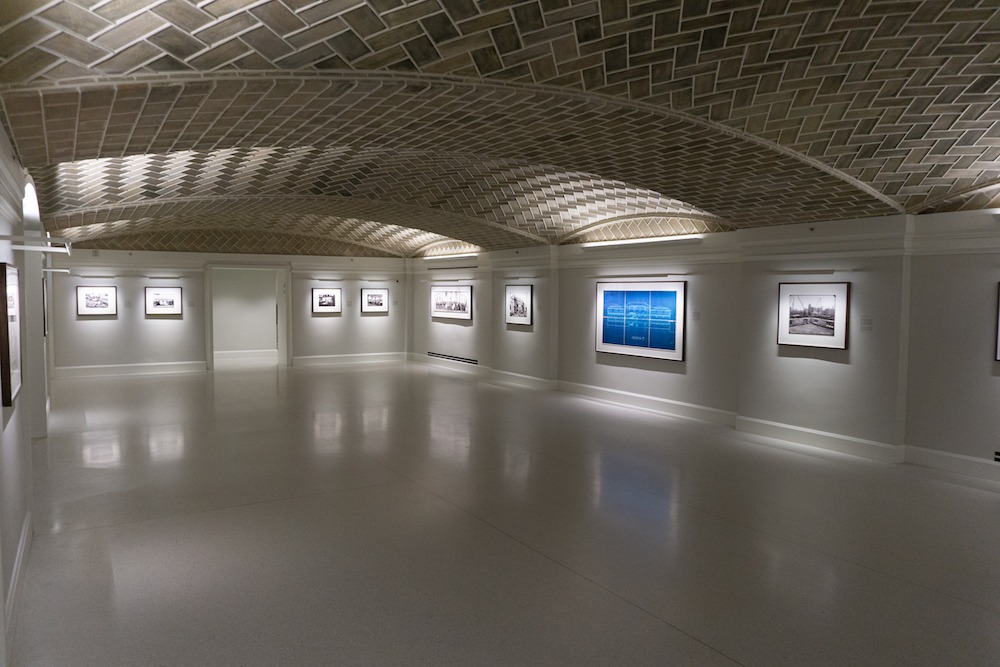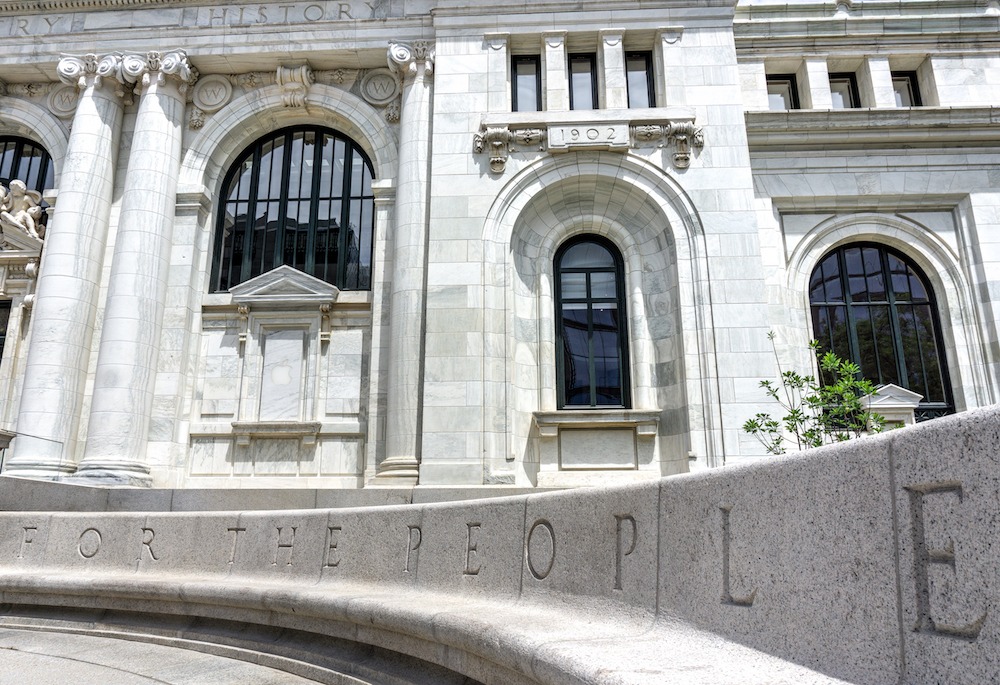Revitalizing Carnegie Library
Words: Ashley Johnson
Words: Ashley Johnson
Photos: Beyer Blinder Belle Architects & Planners
The name Andrew Carnegie evokes images of philanthropy, innovation, education, and social improvement. The business magnate’s legacy and vision extended to the formation of more than 3,000 public libraries in the United States, Canada, and around the world starting in 1883 in Dunfermline, Scotland. One of those Carnegie Libraries is located in Washington D.C., situated at the intersection of two major diagonal avenues following the city’s original layout.
Over five decades this Carnegie Library functioned as the main central library in Washington D.C. from the day it opened in 1904 until 1970 when it changed roles. Located in Mount Vernon Square, the building is surrounded by a picturesque, park-like setting.
When the plan for the city of Washington D.C. was laid out in 1791, there were 11 “reservations,” or squares that intersect avenues and mark major locations. On one of those original reservations sits Carnegie Library.
Before Andrew Carnegie saw the reservation’s potential, the space sat undeveloped as a temporary market space. Carnegie made a donation to the city, and Washington D.C.’s first integrated public library opened.
The design for the construction of the building was won by New York architectural firm Ackerman and Ross through a bidding process. At the end of the design and construction stage, Andrew Carnegie invested additional funding to add sculptural elements to the interior of the building. All of the sculptures and pediments on the premises were carved onsite by famed sculptor Andrew Martine.
After the library vacated the premises in 1970, the space was empty before filling a number of roles over the years, including being leased by the University District of Columbia, and also serving as a museum. Today the Carnegie Library building is owned by the city of Washington D.C. and is being leased out. It recently went through a 2-year renovation process by Beyer Blinder Belle Architects & Planners where the interior and exterior were cleaned and restored to preserve its original, historical look.
2000 Renovation
Before the Carnegie Library underwent its current restoration, it first experienced a renovation in 2000 that caused extensive damage. Fortunately, not all aspects of the building were beyond recovery and repair. The stone facade remained intact, as well as the carved granite bench on the South Plaza.
In this first renovation of the Carnegie Library building, there was an addition of a clear story, a roof, a theater in one of the reading rooms, and the infill of a beautiful brick interior courtyard atrium original to the building. When the collaborative firms came on board for this more recent renovation, they made an effort to remove the non-original clear story and roof, while restoring the original central brick atrium.
Current Renovation
The Carnegie Library underwent a massive overhaul of its interior and exterior to reverse the damage caused in the 2000 renovation. Beyer Blinder Belle Architects & Planners who have offices in Washington D.C., New York, and Boston, took on the large-scale revitalization after winning the project through a bidding process. Having been in business for more than 50 years, this firm has extensive experience focusing on historic preservation and adaptive reuse projects.
There have been attempts at horizontal additions or drastic expansions at the Carnegie Library that might take away from its original architectural intention. This allowed the designers in its renovation to work within the original footprint and maintain the park-like setting surrounding the building.
Since this building is listed on the D.C. Historic Inventory and the National Register of Historic Places, it required a full Section 106 review process. This review is a critical component of the National Historic Preservation Act of 1966. The State Historic Preservation Office was heavily involved in the plans for the restoration, including the approval of the mockup as well as the removal of some pediments on the exterior.

The Design Phase - 1 Year
The renovation project started with a survey of the exterior stone, a sandy white Vermont marble with a granite water table, by BBB Architects and Planners’ materials conservation consultant, CSI Conservation Solutions Inc. (CSI). CSI created a report outlining the initial scope of the repairs necessary for the exterior, which allowed BBB Architects and Planners to take the project through concept, schematics, design development, and CD documents.
CSI developed specifications and elevations, noting all the areas on the Carnegie Library building’s exterior surface where Dutchman repairs were necessary, as well as free-pointing, cleaning, and consolidation.
“The overall building, despite being over 100 years old, was in really good shape and that was very exciting,” said Jennie Gwin, AIA Principal at Beyer Blinder Belle Architects & Planners.
With help from local mason Lorton Stone, CSI self-performed the restoration on much of the exterior sculptural work that included decorative cherubs and other sculptural groups around the building. On Lorton Stone’s side, they performed stone replacement, Dutchman repairs, cleaning and pointing of the stone.
In order to determine the scope for the consolidation, testing was performed at High Bridge Laboratory in Canada where a core sample was taken from one of the pediments. This provided a chemical breakdown of the existing marble and how to go about a consolidation repair.
During the design phase, the interior of the Carnegie Library had its share of challenges. Supporting the first floor of the building were Guastavino tiles, similar to what is used in the oyster bar at Grand Central Station. These tiles were created by Raphael Guastavino, who developed them as a proprietary structural clay-tile system when he came to the United States from Spain in the 1880s.
Wherever these textured tiles are used, they appear as a barrel vault system. In the Carnegie building, they supported a portion of the first floor, which was the ceiling for the original bike room that then became a gallery and exhibit space in the basement.
The challenge was they had been painted, covering up the true beauty of these natural clay textured tiles. The mockups that were done led the team to believe they could use a paint stripper that would not affect the ribbon pointing. However, during construction, the contractor for the project discovered this was not the case. There was fear that the tiles would fall, which some did.
Because the Guastavino tile system was structural, a work plan had to be put into place. Rather than re-grouting the whole thing at once, the team broke it up into 8-foot by 8-foot sections where they restored one section at a time. This included not just re-grouting, but cleaning and replacing tiles too.
“When you look at the room today, it looks like it’s the same as it was 120 years ago. The tiles don’t stick out at all, and neither do the patches,” said Bradley Cambridge, AIA, LEED AP, Senior Associate at Beyer Blinder Belle Architects & Planners.
Another significant interior challenge centered on the first floor by the circulation desk, which was below a laylight, with a skylight above. Which was removed in 2000, a new skylight was installed over the atrium as part of the BBB renovation project. This allowed natural light to flood the interior of the building. Beyond the skylight was a two-story brick atrium with exterior windows on three sides. One of the walls was a double-width, load-bearing masonry wall. In order for the team to get their equipment inside, they underpinned and completely removed the wall to create a cavity before putting back the same face brick.
On the other two walls were windows that were impeded by the 2000 renovation. Once that non-original construction was removed, the original windows covered with gypsum boards were uncovered along with the stone sills. This made a huge impact on the design by opening up the space and allowing natural light to flood into the center of the building. An off-white plaster skim coat provided by Limeworks was added to all four sides of the atrium, revealing the brick pattern while adding some texture beyond paint.
Cleaning the Building
Because the Carnegie Library building was in better shape than expected, much of the exterior surface needed a mild detergent cleaning, with some areas requiring more intensive efforts.

For most of the project, a mild detergent by Prosoco was used. For more heavily soiled areas, a product called Rotec was used, which is akin to minor mechanical removal where a diamond dust medium is blasted against the building to remove deposits. In using the Rotec product, Lorton Stone was able to clean the exterior while maintaining the historic broaching that has been in place since the beginning.
Different cleaning products were used with mockups of the building exterior during the design phase and carried through to the construction phase. Approval was received from the building ownership and masonry contractor with regard to the consistency and color of material used in any free-pointing or cleaning products.
The Construction Phase - 18 Months
Given the size of Carnegie Library, 83,000 sq. ft., to a large extent the stone on the building’s exterior is original. There were areas that suffered extensive damage, such as the 22 pediments on the monumental windows on the first floor. Because they jutted out so far from the facade, these south-facing vaults at the base of the capitals experienced sugaring and had to be replaced. Despite these, only a few Dutchman repairs were required where whole stones were replaced.
At one point during the construction phase, the owner was interested in staining the stones of the building’s exterior to match. Ultimately the decision was made not to move forward with this decision and instead let the stones weather and age naturally.
Since the original stone exhibited a broaching pattern with a vertical striation that had been mechanically applied, the decision was made by all the teams to apply that broaching pattern to all-new exterior Dutchman repairs.
Despite the renovation being successful, it was not without challenges. Certain areas of the building were heavily soiled as a result of pigeon roosting over the years. This created deep staining that was difficult to clean. By using poultices, the staining was brought to the surface to decrease the yellow tint of the marble.
Another challenge during the construction phase involved the standing seam copper roof that endured years of staining on the white marble façade stones near the roof could not be fully cleaned despite multiple mock-up attempts, but the design team and owner decided to allow copper staining to remain as even if cleaned it would be re-stained over time.
The renovation was a collaboration within the design team, the building’s owners, as well as local reviewing agencies, such as the Commission of Fine Arts. During the construction phase, every team was onsite and consistently reviewing decisions, plans, and changes. Once the building was fully scaffolded CSI, BBB, and the contractors were able to get an up-close look at the exterior surface and analyze each individual stone.
“The biggest question with masonry restoration is how far do you take it?” said Cambridge. “Do you take it too far or not far enough, in trying to find that sweet spot.” From the moment the Carnegie Library opened its doors in Washington D.C., it has served many roles in support of the community from a modern, integrated public library to a museum serving the educational needs of the city. Despite these many roles, it has always served as a centralized fixture in the heart of the city and a testament to its namesake, while watching the city burgeon and grow up around the building.
Today the Carnegie Library is once again a place, with people using the plaza, sitting on the lawns, having lunch, and even watching the United States win the Women’s World Cup.